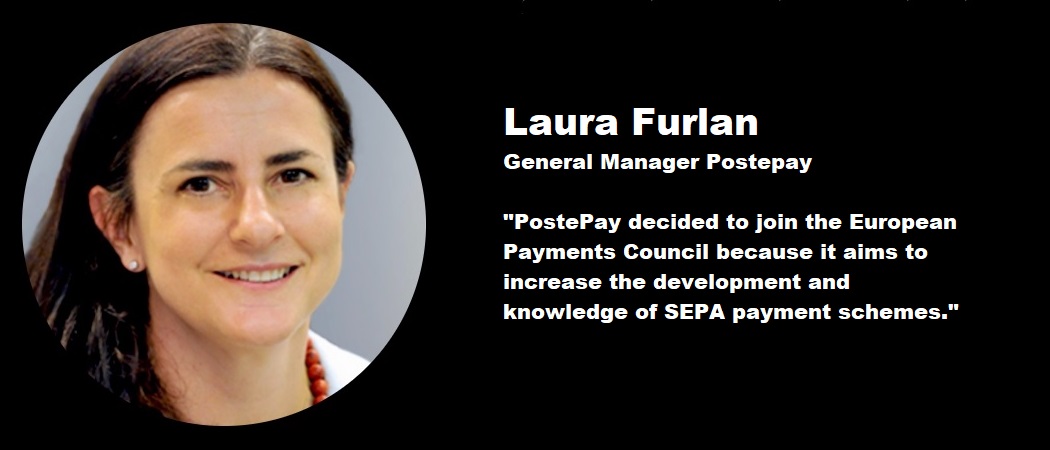
Postepay is a leading payments service provider (PSP) in Italy, with a stock of about 30 million cards in addition to eleven million digital wallets, and processing 2.3 billion transactions per year.
At the beginning of 2024 PostePay – the payments, telco, and energy division of Poste Italiane – became a member of the European Payments Council. On this occasion, the EPC spoke in an interview to PostePay’s General Manager, Laura Furlan, about payment trends, PostePay’s role within the Italian payment sector, and on which payment innovation products they are focusing.
Who is PostePay and what does it represent?
PostePay is a subsidiary of Poste Italiane group, a platform company operating in mail and parcel delivery, financial services, and insurance with an omnichannel strategy based on an unparalleled network of post offices, proprietary digital channels and third parties.
In Italy, PostePay is well-known for Postepay Evolution, a prepaid card with an IBAN that has reached a stock of ten million cards and a significant share of e-commerce payments.
PostePay also supports the Poste Italiane Group in its constant search for innovative solutions reducing the digital divide and increasing financial inclusion, supporting and sustaining different segments of the population within the communities in which it operates.
On which innovative payment products is PostePay currently focused? What developments do you foresee in the near future?
PostePay is currently focused on digital wallet solutions and continues to foster the growth of a valuable relationship with customers through the development of innovative omnichannel solutions that ensure payments, sales and the constant improvement of customer experience. To increase digital payments transactions and progressively replace cash, we are working on international open standards such as instant payments and closed loop transactions via our digital wallets. We call these activities an ‘Instant Open Payment Platform’.
In compliance with the European Retail Payment Strategy, PostePay is working on new, more digital and instant payment services, strengthening PostePay acceptance. In particular, PostePay is focusing on innovative solutions based on QR codes and the potential evolutions of the revised Payment Services Directive (PSD2) and future Third Payment Services Directive (PSD3). Furthermore, the missing piece of the puzzle in the innovative Request-to-Pay (RTP) payment ecosystem is on the PostePay roadmap.
What macro-trends in the European payments landscape are currently the most interesting for PostePay?
At this time in history, people are continually adapting to this climate of instability, primarily seeking a sense of belonging that is also reflected in their choice of a brand. In this scenario, two macro-trends emerge around which PostePay will design products and experiences for customers: digital wallets and data-driven artificial intelligence (AI).
According to Juniper data1:
– sixty percent of the world’s population will use digital wallets by 2026, with accelerated growth due to the use of super apps and QR code payments;
– a growth of more than seventy-seven percent is estimated for global transaction value from digital wallets from 2023 to 2028.
Digital wallets are set to be enriched with exclusive services and features that will respond to the customer’s needs and accompany them in managing their daily routine: evolved money exchange, social payment, payment management, Buy Now Pay Later, ticketing, and mobility.
The use of AI enables the optimisation of customer segmentation and personalisation. This enables faster responses, accelerates the time to market and enhances personalised content and the customer journey. According to Gartner research Top 5 Marketing Trends and Predictions for 2023, by 2025, organisations using AI in marketing will shift 75 percent of their operational activities from production to more strategic areas. Hyper-personalisation is the engagement process that uses AI for real-time data management to create products.
The interview in full here
_____________
1 Digital wallets: platform analysis, key trends and market forecasts 2023-2028
Banking 4.0 – „how was the experience for you”
„To be honest I think that Sinaia, your conference, is much better then Davos.”
Many more interesting quotes in the video below: